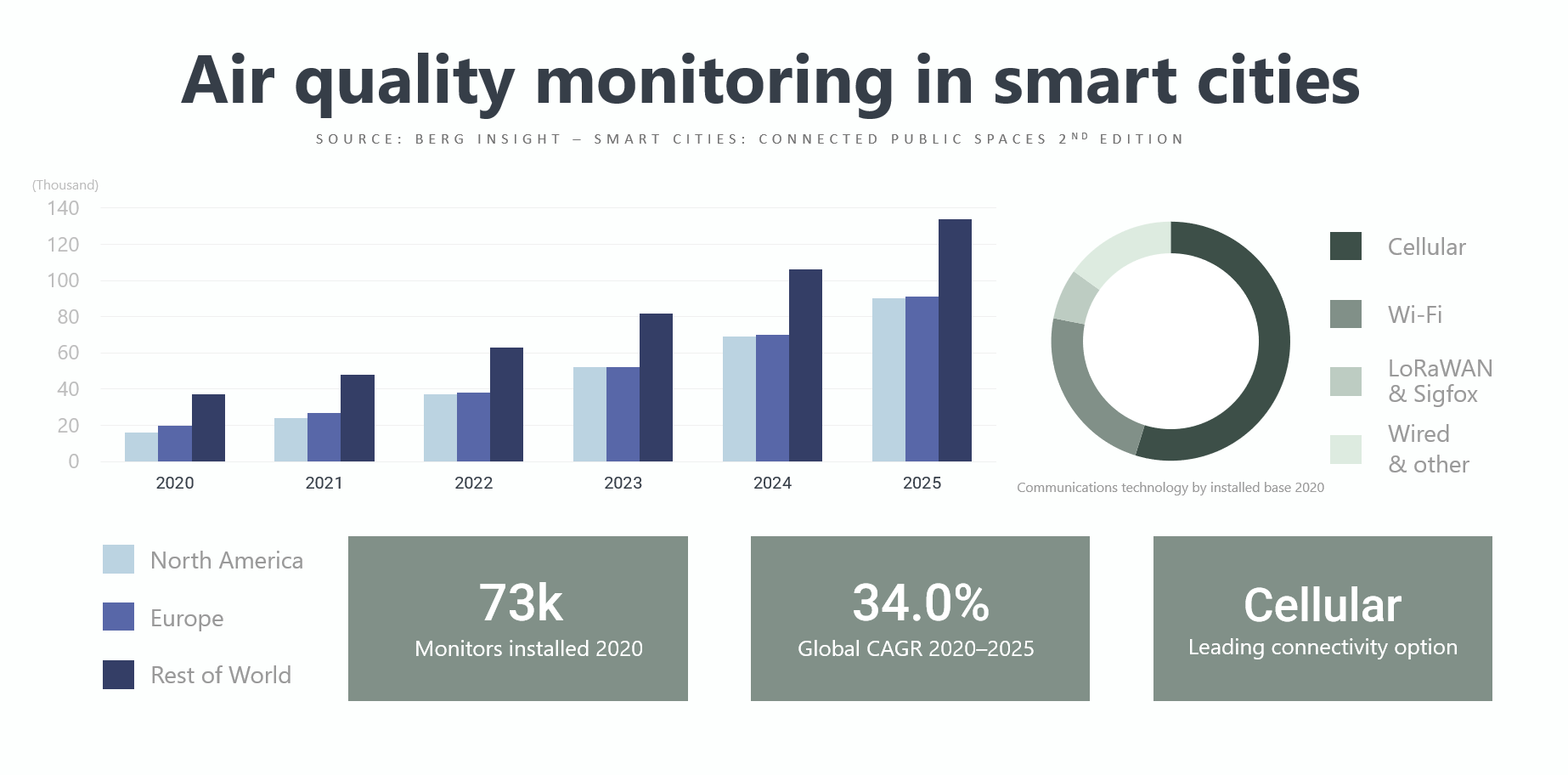According to a new research report from the IoT analyst firm, Berg Insight, the installed base of urban air quality monitoring devices reached 73,000 units in 2020 and will grow at a CAGR of 34% to reach 315,000 units in 2025.
This number refers to any type of networked outdoor air quality monitoring device that in some way is used for supplementary air quality monitoring purposes in cities and communities. Traditional regulatory monitoring stations and devices intended for personal use only are thus not included.
The last five years has seen a rapidly growing commercial availability of increasingly small and low-cost air quality monitoring devices that enable deployments in large numbers at reasonable costs, thereby addressing the shortcomings of traditional monitoring networks which consist of highly advanced and very expensive monitoring stations that typically can be found at few locations in major cities and therefore have very low sensitivity for local variations in air quality.
“Many cities have now finally started to realise the immense value that IoT-enabled and relatively low-cost and small-sized air quality monitors could bring by facilitating substantial improvements in the spatial and temporal resolution of urban air quality data,” says, Levi Ostling, smart cities analyst at Berg Insight.

During the past year, the interest in air quality monitoring solutions in the smart city context has reached entirely new levels, boosted by news about potential relationships between air pollution and COVID-19 as well as by record-breaking wildfire seasons in the US and Australia. The market for non-regulatory devices is however in a nascent stage and the number of market participants is growing at a day-by-day basis.
Companies that have emerged as vendors include for example Environmental Instruments (AQMesh), Airly, Envea, Libelium, Kunak Technologies and Breeze Technologies from Europe; Clarity Movement, Aclima, PurpleAir and Met One from North America; and Aeroqual, Phoenix Robotix (Aurassure), Oizom and Sailhero from Asia-Pacific. The range of devices available in the market span from near reference-grade solutions to very low-cost devices with little to none supporting software and services.
Although advancements are being made, there is still a lack of standards and certifications related to non-regulatory air quality monitoring devices. The level of performance of air quality monitoring solutions is of great importance as air quality data is often used to inform decisions that have direct consequences for people’s health and wellbeing. At this stage, cities thus need to be wary in their implementation strategies for these new types of devices.
“If too many cities hastily adopt solutions that turn out to be of poor quality, the industry is at risk of inducing a general mistrust in low-cost air quality sensing technology a hurdle that could be difficult to overcome once established” concludes Ostling.
To download the report brochure click here
Comment on this article below or via Twitter: @IoTNow_OR @jcIoTnow










